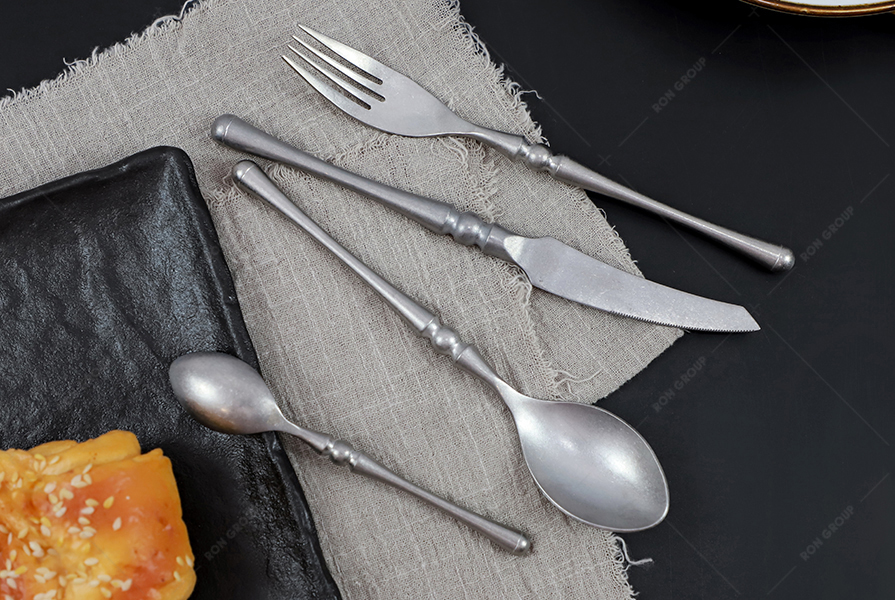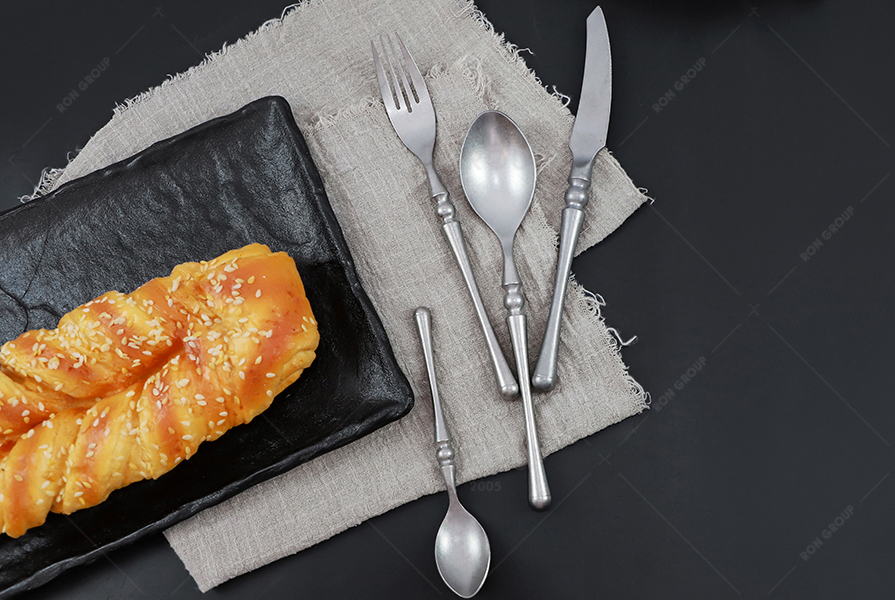
Ron Wong
86-13380258855
sales@rongroup.co

Understanding the Array of Cutlery in French Dining
Appetizer or Salad Fork: Typically smaller than the main course fork, this is used for the first course. It is placed on the outermost left side of the plate setting.
Fish Fork: Accompanied by a fish knife, the fish fork has a shorter left tine which is useful for separating fish flesh from bones. It is used during the fish course, if served.
Dinner Fork: Used for the main course, this fork is larger than the appetizer fork and is placed to the left of the dinner plate.

Dessert Fork: Often brought to the table when dessert is served, this fork might also be placed above the plate or brought out with the dessert.
Butter Knife: Small and with a rounded point, this knife is used exclusively for butter.
Fish Knife: Paired with the fish fork, this knife is uniquely shaped to fillet and lift fish flesh smoothly.
Dinner Knife: Used for the main course, this knife is typically larger than the others and is placed to the right of the dinner plate.
Dessert Spoon or Knife: Depending on the dessert, either a spoon or a knife might be used, which is usually placed above the plate or served with dessert.

Etiquette Tips for Using Cutlery in a French Restaurant
Outside-In Rule: Start with the cutlery placed on the outermost side and work your way inwards with each course.
Resting and Finished Position: Place your cutlery on your plate between bites (resting position) and when you are finished eating (finished position).
Why Restaurant Owners Love This Tradition
Restaurant owners of fine French eateries appreciate this cutlery tradition as it reflects the sophistication and attention to detail in French cuisine. It enhances the dining experience by adding a layer of elegance and ceremony to the meal, making it memorable for diners.






Ron Group
86-13380258855
sales@rongroup.co
